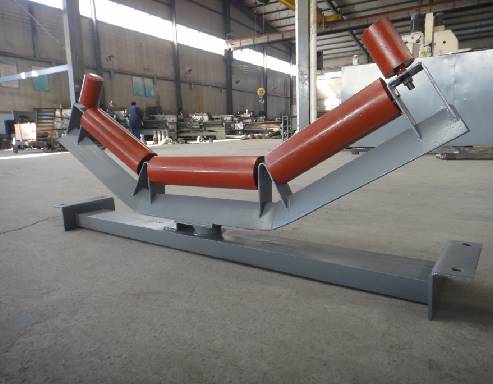 Afrikaans
Afrikaans  Albanian
Albanian  Amharic
Amharic  Arabic
Arabic  Armenian
Armenian  Azerbaijani
Azerbaijani  Basque
Basque  Belarusian
Belarusian  Bengali
Bengali  Bosnian
Bosnian  Bulgarian
Bulgarian  Catalan
Catalan  Cebuano
Cebuano  Corsican
Corsican  Croatian
Croatian  Czech
Czech  Danish
Danish  Dutch
Dutch  English
English  Esperanto
Esperanto  Estonian
Estonian  Finnish
Finnish  French
French  Frisian
Frisian  Galician
Galician  Georgian
Georgian  German
German  Greek
Greek  Gujarati
Gujarati  Haitian Creole
Haitian Creole  hausa
hausa  hawaiian
hawaiian  Hebrew
Hebrew  Hindi
Hindi  Miao
Miao  Hungarian
Hungarian  Icelandic
Icelandic  igbo
igbo  Indonesian
Indonesian  irish
irish  Italian
Italian  Japanese
Japanese  Javanese
Javanese  Kannada
Kannada  kazakh
kazakh  Khmer
Khmer  Rwandese
Rwandese  Korean
Korean  Kurdish
Kurdish  Kyrgyz
Kyrgyz  Lao
Lao  Latin
Latin  Latvian
Latvian  Lithuanian
Lithuanian  Luxembourgish
Luxembourgish  Macedonian
Macedonian  Malgashi
Malgashi  Malay
Malay  Malayalam
Malayalam  Maltese
Maltese  Maori
Maori  Marathi
Marathi  Mongolian
Mongolian  Myanmar
Myanmar  Nepali
Nepali  Norwegian
Norwegian  Norwegian
Norwegian  Occitan
Occitan  Pashto
Pashto  Persian
Persian  Polish
Polish  Portuguese
Portuguese  Punjabi
Punjabi  Romanian
Romanian  Russian
Russian  Samoan
Samoan  Scottish Gaelic
Scottish Gaelic  Serbian
Serbian  Sesotho
Sesotho  Shona
Shona  Sindhi
Sindhi  Sinhala
Sinhala  Slovak
Slovak  Slovenian
Slovenian  Somali
Somali  Spanish
Spanish  Sundanese
Sundanese  Swahili
Swahili  Swedish
Swedish  Tagalog
Tagalog  Tajik
Tajik  Tamil
Tamil  Tatar
Tatar  Telugu
Telugu  Thai
Thai  Turkish
Turkish  Turkmen
Turkmen  Ukrainian
Ukrainian  Urdu
Urdu  Uighur
Uighur  Uzbek
Uzbek  Vietnamese
Vietnamese  Welsh
Welsh  Bantu
Bantu  Yiddish
Yiddish  Yoruba
Yoruba  Zulu
Zulu mining conveyor pulleys
Mining Conveyor Pulleys Essential Components of Efficient Material Handling
In the mining industry, efficient material handling is critical to maximizing productivity and minimizing operational costs. One of the key components that play a vital role in this process is the conveyor pulley. Mining conveyor pulleys are necessary for the transportation of mined materials and are integral to the overall functioning of conveyor systems.
Conveyor pulleys serve multiple purposes. They act as the driving force for the conveyor belt, facilitate the change in direction of the belt, and help in maintaining proper tension. Essentially, they are crucial for the smooth and efficient operation of conveyor systems. There are several types of pulleys used in mining, including drive pulleys, return pulleys, snub pulleys, and tail pulleys, each serving a specific function.
Types of Conveyor Pulleys in Mining
1. Drive Pulleys These are located at the head of the conveyor system and are responsible for supplying power to the belt. The drive pulley rotates the belt by utilizing friction, making it essential to ensure a proper grip to prevent slippage.
2. Return Pulleys Positioned at the tail end of the conveyor, return pulleys allow the belt to make a return trip after discharging materials. They ensure that the belt maintains its intended path and tension while returning to the drive pulley.
3. Snub Pulleys These pulleys are used to increase the angle of contact between the belt and the drive pulley. By enhancing friction and traction, snub pulleys improve the efficiency of the transfer of power to the belt.
4. Tail Pulleys These are also located at the end of the conveyor system. Tail pulleys help support the belt, preventing sagging and maintaining the system's integrity during material handling operations.
mining conveyor pulleys

Materials and Design
Mining conveyor pulleys are typically constructed from robust materials, including steel or high-strength alloys, to withstand the rigors of harsh mining environments. Durability is crucial as pulleys are constantly exposed to heavy loads, abrasive materials, and extreme weather conditions. Corrosion-resistant coatings or treatments are often applied to enhance the lifespan of these components.
When designing conveyor pulleys, several factors need to be considered, including the diameter and width of the pulley, the load requirements, and the environmental conditions in which they will operate. The design must also account for factors like belt tension, speed, and the type of materials being transported, ensuring optimal performance.
The Importance of Maintenance
Regular maintenance of conveyor pulleys is vital to ensure efficient operation. Worn or damaged pulleys can lead to belt slippage, alignment issues, and ultimately system failures that can result in costly downtime. Regular inspections and timely replacements of worn-out pulleys can significantly enhance the lifespan of the conveyor system and prevent disruptions in material handling processes.
Conclusion
In the mining sector, where efficiency and reliability are paramount, conveyor pulleys play an indispensable role in material handling systems. By choosing the right type of pulleys and ensuring their proper maintenance, mining companies can improve operational efficiency, reduce costs, and enhance overall productivity. As technology continues to advance, innovations in pulley design and materials are likely to further optimize the performance of conveyor systems, paving the way for more efficient mining operations in the future.
-
Revolutionizing Conveyor Reliability with Advanced Rubber Lagging PulleysNewsJul.22,2025
-
Powering Precision and Durability with Expert Manufacturers of Conveyor ComponentsNewsJul.22,2025
-
Optimizing Conveyor Systems with Advanced Conveyor AccessoriesNewsJul.22,2025
-
Maximize Conveyor Efficiency with Quality Conveyor Idler PulleysNewsJul.22,2025
-
Future-Proof Your Conveyor System with High-Performance Polyurethane RollerNewsJul.22,2025
-
Driving Efficiency Forward with Quality Idlers and RollersNewsJul.22,2025





























